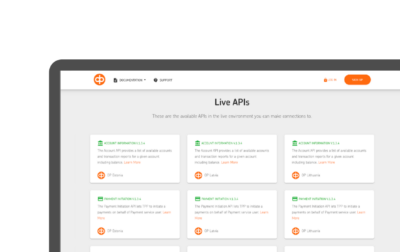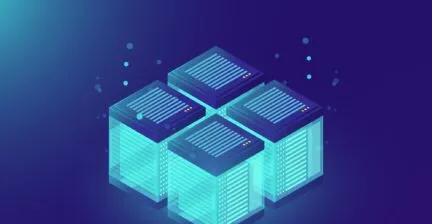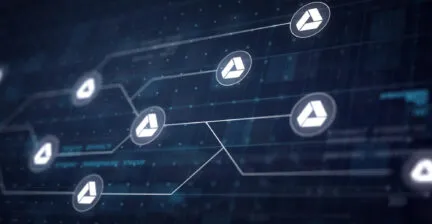Most popular backend frameworks in 2024
When you build a house, you need a strong foundation. Likewise, when you develop software, the appropriate framework for your backend is essential.
So below, Touchlane’s development team uses its years of backend development experience to assess 2024’s biggest framework trends and highlight which one is best suited for different development goals.
Brief overview of backend trends in 2024
Understanding the dominant trends that influence the backend ecosystem is crucial for successfully navigating the backend framework selection process.
In 2024, backend development focuses on efficiency by utilizing microservices architecture. This employs splitting applications into separate, easier-to-manage services that engage with one another via APIs.
Serverless computing relieves developers of the burden of maintaining server infrastructure. With serverless, operational complexity and expenses are decreased because cloud providers manage, scale, and support the servers. The Big 3 cloud platforms offer their serverless compute services – you can choose between AWS Lambda, Azure Functions, and Google Cloud Functions for rapid design and deployment of backend solutions.
! If you want to learn more about cloud platforms, check out check out Touchlane’s comprehensive comparison of the Big 3.
Artificial intelligence (AI) and machine learning (ML) integrations are other notable trends. Backend frameworks are utilized by developers to build APIs and various services that have AI or ML capabilities. These services include recommendation systems, like Netflix and Spotify, natural language processing, and predictive analytics.
Focus on security
With the increasing number of security breaches, implementing strong security measures from the ground up is a top priority. For instance, It is enough to look at the recent CrowdStrike / Microsoft incident that affected more than 30,000 organizations worldwide. The potential negative consequences are severe. It’s crucial that your cybersecurity team strictly follows established protocols. Strong security for backend frameworks is no longer an option; it’s essential.
How to choose a backend framework
There are so many options available, and deciding on what backend technology to choose that works for you might be tough. Here are the factors that matter:
- Performance and scalability. These are critical for apps with data processing requirements and high traffic.
- Community and ecosystem. When frameworks have big communities around them, they make it easy to resolve typical issues.
- Ease of use. A framework’s learning curve and simplicity of usage are important factors to take into account, particularly for newcomers or small teams.
- Security. Opt for frameworks that have security features integrated.
- Integration and compatibility. Lastly, think about integration capabilities. The most effective frameworks enable GraphQL and RESTful APIs, as well as straightforward database integration with PostgreSQL, MongoDB, and MySQL.
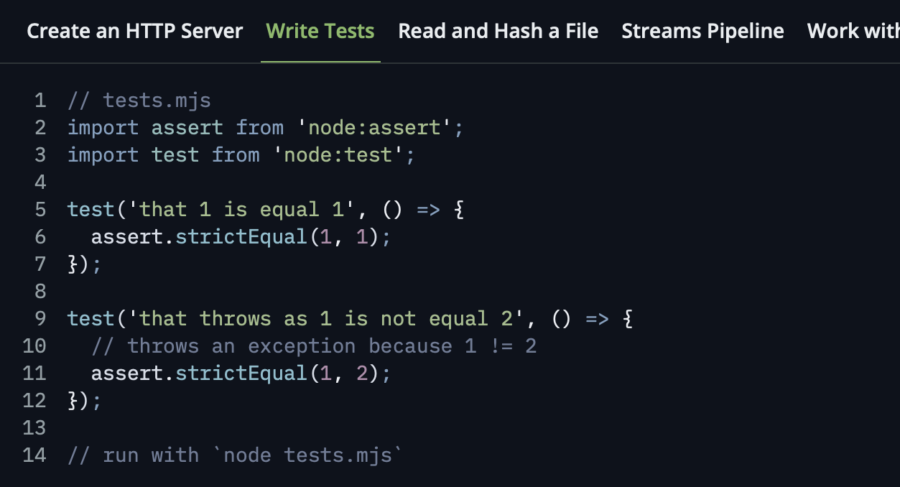
The best backend frameworks for 2024
Among the frameworks we examine today, there are a few that have been out there for a while without losing their relevance. Some are newcomers that have established themselves inside the developer community in recent years. These frameworks have different capabilities but overall strive to achieve the same thing – create apps faster.
Node.js
Node.js has been a powerful influence in backend programming since its release in 2009. It is perfect for developing flexible apps and has a large-scale ecosystem around it – for instance, the Express.js framework. Node.js developers can create solutions of all scales, from APIs to intricate microservices.
Node.js is the preferred framework of Touchlane’s full-stack developers. It was featured in our Vicinity project.
Spring Boot
Large-scale application development is made easier with Spring Boot. This framework boasts proactive community assistance, as well as a strong environment and quick development capabilities. Thanks to its advanced status, microservice architectures and complicated projects favor it.
At Touchlane, we have developed an extensive expertise of utilizing Spring Boot by employing it in our multiple projects, including Gaimin and MyCore. Our backend team often chooses it for reliability and ease of maintenance. Extensive documentation provides solutions to any issues, and combined with Touchlane’s expertise, we can effectively use this tool to improve your app. Additionally, Spring Boot makes setup and deployment easier, freeing up resources to focus more on building new excellent features rather than getting bogged down in configuration details.
Django
This is a fast and effective framework. Django speeds up website loading times by employing caching to memorize pages and performs heavy operations in the background to keep your website from crashing. In addition, it can operate over multiple servers to easily manage additional visitors. Django’s clever database access method saves both time and resources.
Laravel
Laravel has a reputation for being quick. It distributes work for heavy traffic, manages databases effectively, and retains page memory. Moreover, Laravel is easy to use, with comprehensive documentation, an engaged community, and practical tools. It may expand with your project because of queues, caching, and simple server scaling. Last but not least, Laravel provides integrated security against a range of attacks.
Ruby on Rails
Ruby on Rails has a reputation for being quick and simple to use. It employs functions like caching, background processes, and an organized code base to do this. Apps that run on Ruby on Rails are safe and have good scalability. The big, friendly community offers a huge number of training resources.
Flask
Python’s Flask is a web framework that excels in usability and flexibility. Due to this, it is ideal for novices and simple tasks where customization is essential. Flask allows for adding new features with the use of tools created by other developers.
Express.js
Express.js, which is based on the quick and effective Node.js, is excellent at managing numerous requests at once without sacrificing speed. Its scalability and wide community of add-ons let it grow with apps, while its simplicity makes it easy to learn and use. Furthermore, Express.js provides integrated security tools to safeguard your web application.
ASP.NET Core
The open and flexible framework ASP.NET Core is used to create online applications and APIs. You can use C#, F#, and other languages to construct high-performance programs with it. ASP.NET Core operates on Windows, Mac, and Linux – it is a solid option for backend programming, and particularly for Windows apps.
FastAPI
Due to its asynchronous programming, FastAPI is able to provide high performance. Such FastAPI’s characteristics as type annotations and automatic documentation generation improve the maintainability and readability of your code, as well as expedite the development.
Phoenix (Elixir)
Elixir’s capacity to continuously connect and scale makes Phoenix trustworthy and fast. With a helpful community and clear guidelines, it is simple to use and understand. Integrated security safeguards allow Phoenix to keep your software safe and expand seamlessly as your user base grows.
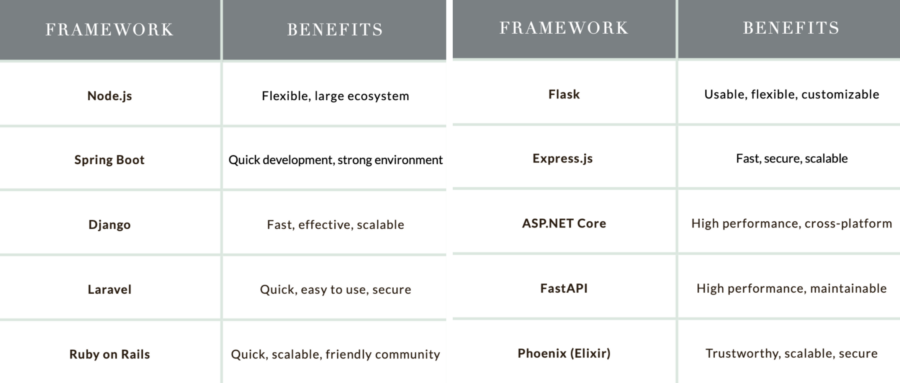
Conclusion
The right framework selection can greatly impact your project. In 2024, trending backend technologies include Django, Spring Boot, Laravel, and more. In general, serverless computing, microservices, security, and AI and ML integration are the main areas of interest for developers who work with the backend.
At Touchlane, we hope that this blog article assists you in the decision-making process. If you need help from a backend expert at any point during the development process, we will be pleased to offer complete backend services or assistance in improving your project with a proper solution.
RELATED SERVICES
CUSTOM SOFTWARE DEVELOPMENT
If you have an idea for a product along with put-together business requirements, and you want your time-to-market to be as short as possible without cutting any corners on quality, Touchlane can become your all-in-one technology partner, putting together a cross-functional team and carrying a project all the way to its successful launch into the digital reality.
If you have an idea for a product along with put-together business requirements, and you want your time-to-market to be as short as possible without cutting any corners on quality, Touchlane can become your all-in-one technology partner, putting together a cross-functional team and carrying a project all the way to its successful launch into the digital reality.
We Cover
- Design
- Development
- Testing
- Maintenance

